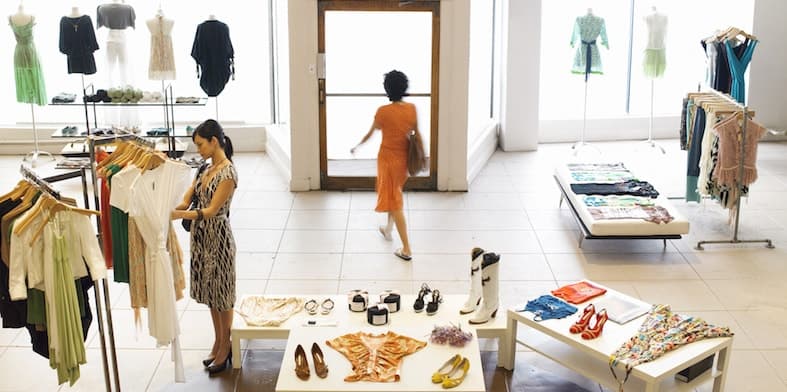Looking to increase your store sales? One of the best strategies and yet most often overlooked ways to do this is through cross-merchandising. First thing is first, however. Just what is cross-merchandising?
Cross-merchandising is when you display a product in more than one specific spot within a single store environment. An example of this would be featuring a handbag on a shelve display, then also featuring this same handbag on a mannequin somewhere else in the store. This strategy – also known as double exposure or double merchandising – is used to gain increased attention with the goal of selling the merchandised inventory as soon as possible. And while selling everything within a store as soon as possible is always the goal, this specific strategy helps increase the chance of a faster turn-around since it positions the product in multiple locations – which ultimately increases the opportunity for it to be seen and experienced by more consumers.
Customer Visibility & Repeat Exposure
Increased customer visibility is always a good thing, but what makes a product worth repeating? To help identify what you should double expose within your own store, consider what your overall inventory looks like. If there is a product that hasn’t sold well and yet you anticipated it would, this would be the perfect candidate to double expose. Likewise, if you have a product that has sold great and you don’t have a lot of inventory left, this would be the perfect candidate to not consider for double exposing unless you’re looking to get it out of your door ASAP. Aside from excess inventory and hot products, seasonal and sale items are great candidates to consider for cross-merchandising. Their shelve life – so to speak – is limited so using merchandising as a strategy to help them sell faster can help you do this.
Double Exposing Effectively
Independent retailers are known for many things… including their inventory, store ambience and even merchandising. It’s these things – among other things – that make them unique and stand out among their local competition. Keeping this in mind, independent merchants can use their unique store layouts, vibe and inventory to their advantage when identifying what they should double expose. To help, first consider how the average consumer navigates your store. Do they immediately move to the right once they enter your store environment, or are they more inclined to make a bee-line to the back?
Typically, customers move towards their right when they walk into a store. Because of this, this space is often referred to as a “hot spot” in in-store real estate, therefore a great spot to display your target product. From there, a customer will gravitate towards the middle and ultimately the left walls of the store. Your middle display options, such as a center island, are also ideal spots to merchandise repeat product. The catch is to know where your hot spots are, then identify what other spots may be good places to cross-merchandise considering the path your customers typically take within your store.
Sometimes twice isn’t enough, however. The trick of double-exposing is knowing when less is more and more is less. If it makes sense, don’t shy away from introducing your specific product beyond two places. Find a home for it in a third and possible fourth spot if it makes sense. If size appropriate, you may even want to have it by the cash wrap area. This is a great space that customers linger while checking out and the perfect time for employees to strike up a conversation about this specific product. The ideas are endless, really. It’s the strategy you need to keep in mind. Always aim to identify how your customer navigates your store to ensure they’re seeing these items in different situations to help entice them to want to buy.
Mixing It Up
Merchandising a product in more than one spot is only effective if it comfortably catches your customers eyes. What you should avoid – however – are customers seeing the same product and feeling as if you your store does not have a strong assortment of inventory for them to discover. Instead, they should see the same product without realizing it’s the same. Your goal should be to mix your merchandising strategies up enough so that the same product looks one way on one spot and another way on another spot. The goal in doing this is that your customer will see the same product in a new light each time he or she views your target, repeat item – offering him or her more ideas of how it would be right for them.
Finally, no matter how effective cross-merchandising is, you must also accept that even the best displays can’t sell bomb products. They can help… absolutely. But keeping a realistic perspective on merchandising and inventory can also help you keep your merchandising in check. Don’t let anything stay in one spot for too long and to help, let data lead you in your future merchandising decisions. Cross referencing data generated from your point of sale and other key software you use for your business, identify what is selling the most, the worst and everything in between. Then review where and how those same items are merchandised. You may just be surprised to discover how cross-merchandising has helped you, as well as what you should cross-merchandise next.





